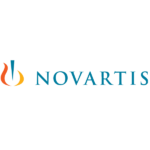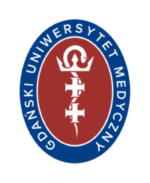Overview of global Biotech, report on the industry: Life sciences: A changing prescription
Overview of global Biotech, report on the industry: Life sciences: A changing prescription.
Burrill’s annual book on the “State of the Industry” is an integral part of the biotech industry’s view of itself. Read part of the Executive Summary here.
Despite a rocky start to the year, 2005 turned out to be an exceptional one for the biotech industry in terms of financings and partnering, bringing in a record $34 billion for US companies.
For its part, big pharma could not shake off drug safety issues that spilled over from 2004. In the wake of this, the pharmaceutical industry, already under siege from the public and regulators, has been dogged by thin pipelines and low R&D productivity. This scenario played out in the capital markets. Investors’ nervousness about these issues was reinforced by the specter of near-term patent erosion of pharma’s blockbusters. Not surprising, then, that pharma looked to biotech for technologies and products, and M&A and partnering deals continued at a torrid pace—a trend that will continue. But Biotech lives in a world of changing presription—making Biotech’s next 20 years challenging and exciting!
Personalized, predictable and preventative medicine
The move to more personalized, predictable and preventative medicine (the three “P’s”) will revolutionalize the healthcare system as we know it today. The technologies and discoveries embodied in the three Ps can come none too soon because already we are witnessing the winds of change rustling through the system. It is a “changing prescription” for biotech with drug safety concerns, chronic healthcare costs spinning out of control, new medicine reimbursement issues to concern us, and the specter of follow-on biologics and generics have become major drivers of this change—all of which became key issues in 2005.
With biotech starting to develop and introduce targeted therapies and molecular diagnostics, it is not surprising that payers, policymakers, the pharmaceutical industry and patients are counting on the industry to deliver on its promise of predictable and preventative medicine that meets the escalating health problems of an aging population, helps control burgeoning healthcare costs and counters the threat of bioterrorism and pandemics. It’s a changed world, and a changing environment.
Overall, 2005 turned out to be an exceptional year:
• In terms of financings and partnering…bringing in a record $34 billion for US companies.
• On the capital markets 2005 was the best of times (for biotech)… it was the worst of times (for big pharma). Notwithstanding what was a very challenging year economically and a very tough equity market, $17.3
billion was invested in the biotech sector in 2005…with all forms of funding finding takers. Only IPOs and debt financing fell short of their comparable 2004 totals. Biotech’s success in the capital markets was led by the large cap companies with robust product pipelines and diversity.
• For its part, big pharma could not shake off drug safety issues that spilled over from 2004. This scenario played out in the capital markets. Investors’ nervousness about these issues was reinforced by the specter of near-term patent erosion of pharma’s blockbusters.
• Biotech did not escape totally unscathed, however. It turned in one of its worst quarter performances in its stock market history in Q1 05, getting caught up in gathering market concerns over rising interest rates, oil prices, inflation, poor corporate earnings and a softer than expected economy.
• It was tough for biotech to generate any sort of momentum even though the IPO window officially remained open. Investors, in large part, stayed on the sidelines…the sub-par performance of the IPO class did not help
to ease matters.
• The bigger story for the industry—and one that unfolded during the year was the amount that the industry generated through partnering. The $17 billion raised was an all time record in biotech’s 30+-year history giving a very clear indication that M&A, along with partnering, had become a more attractive option for biotech companies to help drive their product development programs and ultimately increase shareholder value.
• The FDA put personalized medicine on the radar screen and raised the bar for drug approval in 2005. The agency told industry that it needed a new way of doing things. Its guidance, Pharmacogenomic Data Submissions, released in March 2005, and the Critical Path Initiative are designed to help industry develop more effective and targeted medicines.
• Molecular diagnostics technologies also began to play an important role in practice of medicine, public health, pharmaceutical industry, forensics, biodefense, and the resource sectors. The economic importance of these new technologies in pharmacogenomics will be far reaching.
• On the technology front, the subject of stem cells dominated both the science and the political agenda during 2005. A stem cell bill “stalled” in Congress with official timeline set for voting sometime in the first half of 2006 at best. California’s $3 billion stem cell bond initiative is tied up in the courts. However, other states are racing to join California and develop dedicated funding for stem cell research.
• Quantum leaps in sequencing technologies enabled scientists to tackle myriad genome projects. The new era of personalized medicine also drove up the value of companies with IP that can home in on drug targets and markers. The industry and the financial community once again warmed to genomics.
• A map of single nucleotide polymorphisms (SNPs) in the human genome was published, and the genome sequence of the influenza virus known as Spanish flu, which caused millions of deaths worldwide in 1918, was published despite concerns about making this data available. – Genomics also spilled over into nutrition. Driven by a public that has an increasing interest in taking their health into their own hands, diet fads were giving way to personalized diet plans.
• In other biotech sectors, a major milestone in agricultural biotech was reached in May 2005 when the one billionth acre of biotech crops was sown, capping a decade of plantings in 18 countries around the globe. More than 90% of the eight million farmers growing biotech crops are located in developing nations. In addition to record acceptance by farmers,
scientists continued to increase their understanding and knowledge of plants and animals through genome sequencing projects. In 2005, the rice genome was mapped, and projects to sequence soybean, corn, and sheep genomes were also announced.
• Industrial biotechnology attracted a great deal of attention in the wake of soaring oil and chemical prices during 2005. In August, President Bush signed the Energy Policy Act, which contains almost $1 billion in funding authorizations for bioenergy projects and research and development.
• The globalization of biotechnology continued and “Chindia” set the pace. Due to high drug development costs, pharmaceutical companies have started to look for innovative operation models for drug development, and China and India have the opportunity to become major players of a new drug development paradigm, which would leverage the most efficient drug development resources worldwide.
• Europe’s biotech industry enjoyed a good, if perhaps not quite a vintage year in 2005, with a very respectable showing in terms of financings, corporate partnering and M&A. This came despite the fact that, on average, stock prices of biotech companies in the region did not deliver much in the way of gains for investors. European biotechs did, however, achieve some notable successes with corporate partnering, particularly in the UK towards the end of the year. More than 20 companies made a stock market debut across the continent—more than in the US and a record outside of the genomics boom year of 2000.
Link to a full copy of the Executive summary including “Burrill’s Predictions for Biotech in 2006”














